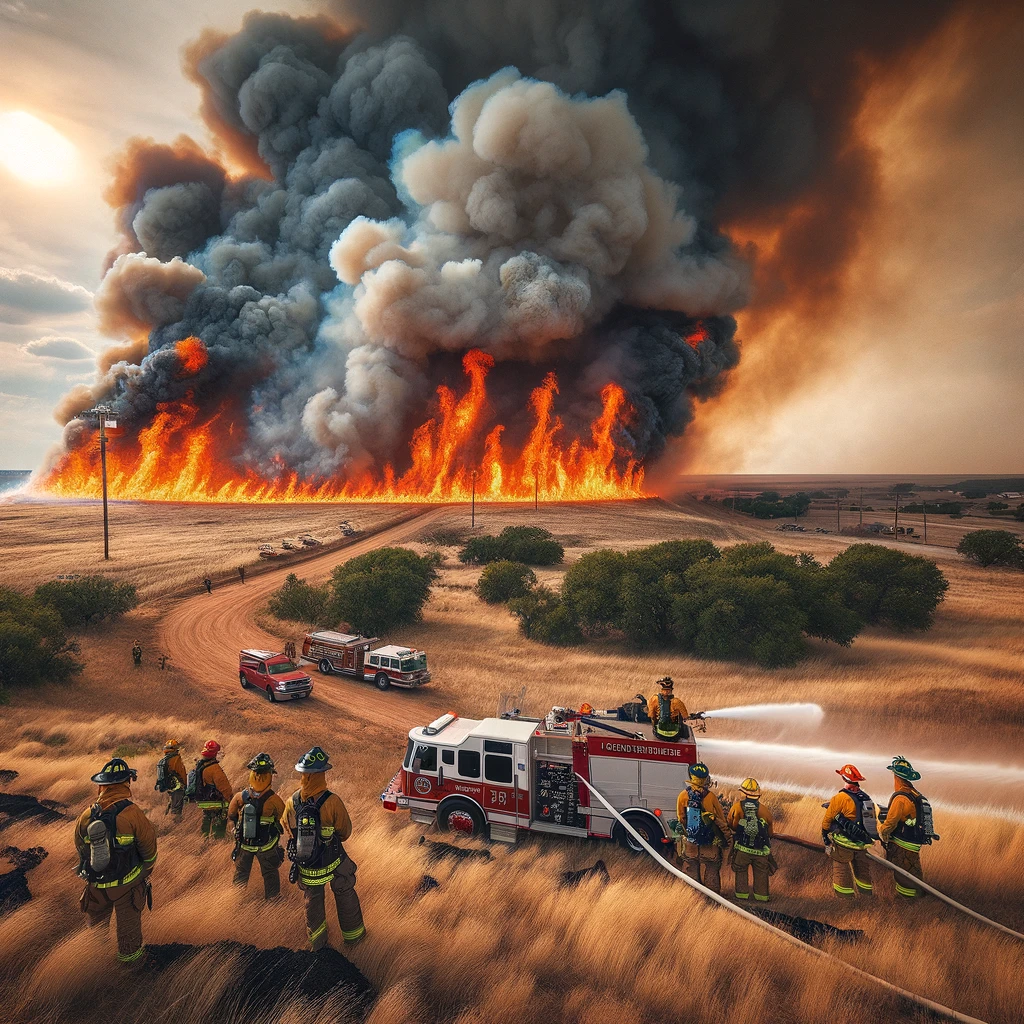March 15, 2025 – Oklahoma – Devastating wildfires continue to burn across Oklahoma, forcing evacuations, damaging properties, and putting firefighters in an intense battle against the spreading flames. As of today, multiple counties, including Stillwater, Norman, and Leedey, are under a state of emergency due to high winds and dry conditions fueling the blazes.
The Current Situation
The Oklahoma Department of Emergency Management reported that over 30,000 acres have been scorched by wildfires in the past week, with fires still raging in at least six counties. The most severe fire outbreak is in Stillwater, where authorities have confirmed that more than 20 homes have been lost. Residents in the area have been urged to evacuate as shifting winds increase the unpredictability of the flames.
Firefighters Battling Intense Flames
More than 500 firefighters from across the state, aided by national reinforcements, are working tirelessly to contain the fires. According to Oklahoma Forestry Services, aircraft tankers have dropped over 250,000 gallons of water and fire retardant to slow the spread. However, the combination of low humidity, high temperatures, and wind speeds exceeding 40 mph has made containment efforts extremely difficult.
Areas Affected and Evacuations
The wildfires have heavily impacted the following regions:
- Stillwater Fire: Over 10,000 acres burned and residential evacuations ordered in the western parts of the city.
- Norman Wildfire: Rapidly moving flames have engulfed 7,500 acres, prompting road closures along major highways.
- Leedey and Western Oklahoma Fires: An estimated 5,000 acres have burned near Leedey, with structures threatened and emergency shelters set up for displaced residents.
Governor Kevin Stitt has officially declared a state of emergency for the most affected areas, enabling state resources to be fully mobilized for disaster response.
What’s Causing These Fires?
According to meteorologists, the wildfires have been fueled by a dangerous mix of prolonged drought conditions and strong winds. The National Weather Service (NWS) has issued a Red Flag Warning, indicating extreme fire danger throughout Oklahoma, particularly in central and western parts of the state.
Officials are also investigating reports that some of the fires may have been caused by downed power lines or human activity. Oklahoma Gas & Electric (OGE) has stated that they are inspecting power lines in the impacted areas to determine whether infrastructure failures contributed to the blazes.
Casualties and Property Damage
So far, at least four people have been injured, including two firefighters who suffered burns while attempting to contain a rapidly spreading fire near Stillwater. Thankfully, no fatalities have been reported.
Initial estimates suggest that over 50 homes and structures have been destroyed, with thousands more at risk if containment efforts are unsuccessful. The Oklahoma Insurance Department is advising homeowners to review their policies and prepare for potential claims due to fire-related damages.
Road Closures and Travel Advisory
Authorities have issued multiple road closures to ensure public safety. Some of the affected highways include:
- Interstate 35 near Norman – Closed due to dense smoke reducing visibility.
- Highway 51 in Stillwater – Partial closures in high-risk zones.
- State Highway 34 near Leedey – Closed to allow fire crews to work unimpeded.
What’s Next?
Fire officials are hopeful that cooler temperatures expected next week will assist in containment efforts. However, with strong winds continuing for the next 48 hours, the fires remain highly unpredictable. Emergency services urge residents to stay informed through official state alerts and adhere to evacuation orders without delay.
How to Help
Oklahomans looking to assist can donate to The Red Cross, Oklahoma Disaster Relief Fund, or provide support through local fire departments. Volunteers are needed to help with shelter efforts and aid displaced families.





